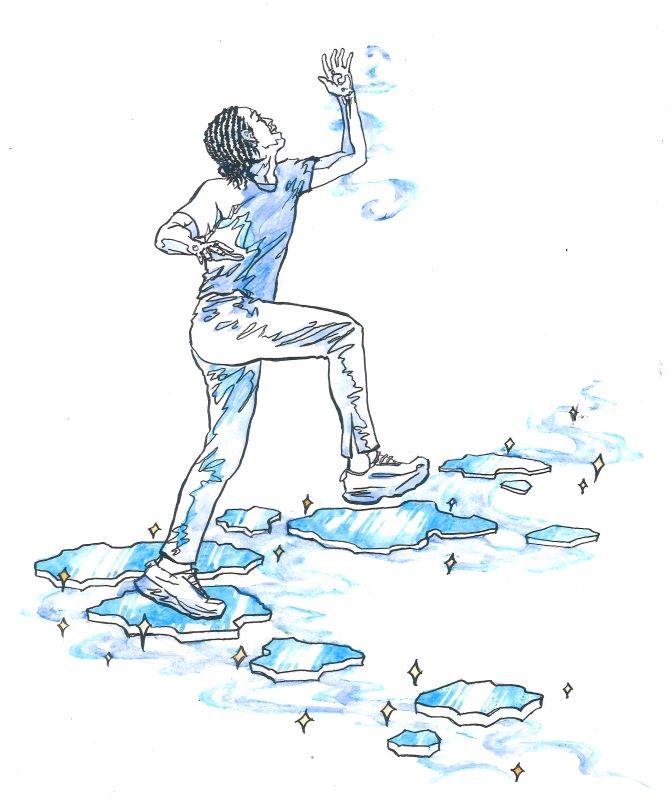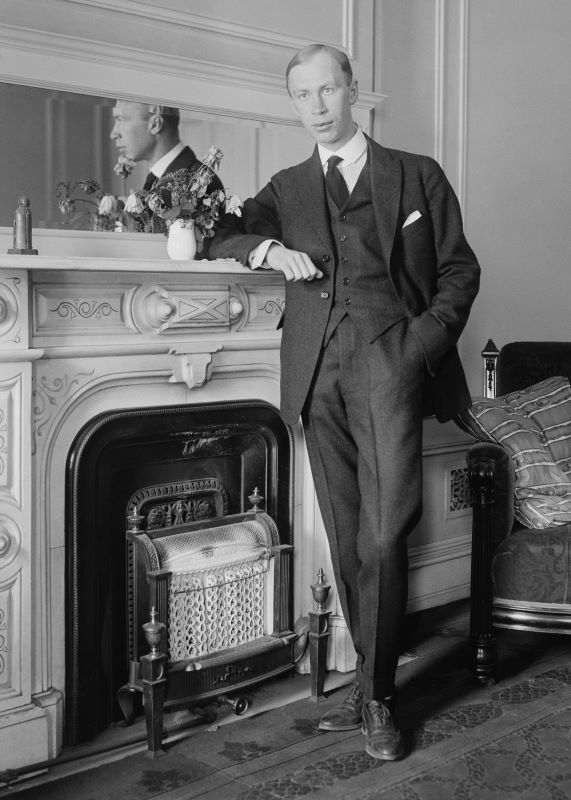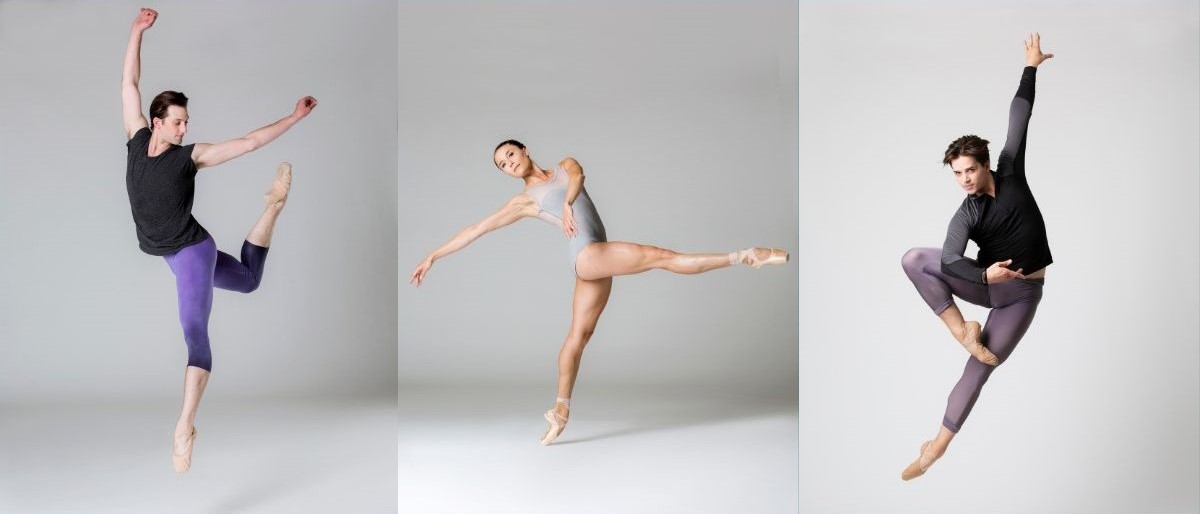
WHAT’S OLD IS NEW
We’ve all noticed the shift: from artisanal breads and cheeses to homemade cider and chickens in backyards, what’s old is new again. Here in Seattle, urban farming is chic. And, at least at PNB, the old-world way of hand-painting large scenery (AKA “drops”) has never gone out of style. Nearly every set piece you see on stage at a PNB performance is made by a fun-loving and tight-knit bunch of accomplished scenic artists. Here’s a sneak peek into the unique and exciting creative process that will deliver a brand new production of Giselle for PNB this June…
INSIDE THE WAREHOUSE
PNB’s sets are built in a nondescript warehouse in Seattle’s Fremont neighborhood, a part of town long known as an epicenter of counterculture and creativity. A dark staircase leads upstairs to where the drops are painted.The walls of the stairwell are decorated with old photographs and bits and pieces of sets from old ballets—mostly silk flowers and plastic greenery.

The air once we get upstairs is warmer and smells (predictably) like paint. An eclectic music mix that includes both Massive Attack and Ella Fitzgerald is playing and a chandelier hangs over an old round table in the corner—a tablecloth completes the bohemian-chic look and makes the warehouse feel like something from an Anthropologie photo shoot. But, the centerpiece of the space is the enormous works of art covering nearly every square inch of the floor.

ONE CANVAS, MANY ARTISTS
We often think of visual artists working solo, but painting sets like this is one of the most collaborative things I’ve ever seen in action, and it’s incredible! The Giselle sets are highly detailed—like an old etching brought to life—with thousands of carefully placed, tight brush strokes in warm brown and olive hues, highlighted by bright orange and cool blue.

Jan Harvey Smith who has been a PNB scenic artist for years (23 years to be exact, but who is counting?) explains that “PNB is unique in that we use so many large, painted drops. Most opera and theater companies use a lot of hard scenery but that’s not conducive to ballet. We need lots of frames to set the scene without inhibiting the dancers’ movement by blocking the stage. There just can’t be any obstacles in the middle of the stage…the dancers need to move!”

Jan’s explanation makes perfect sense but I can’t help but wonder aloud, “But how do you keep the style consistent? It looks like it’s all painted by the same person!” Jan explains further that once a style is established with the designer, she’s responsible for keeping the team of scenic artists on the same stylistic page so to ensure uniformity. Collaboration is the key to their success; nobody works on just one part.

THE FOREST FOR THE TREES
The process of hand-paining drops is far more mathematical and precise than one might think. Expert problem-solvers as well as artists, Jan and her team are responsible for scaling renderings by designer Jerome Kaplan (best known to PNB audiences for his work on Romeo et Juliette) way, WAY up without compromising accuracy. The goal is to get his vision on stage intact. She breaks down the process like this:

First, they lay large pieces of muslin out on the floor; staple it down and starch it so that it retains the necessary shape—a lot like stretching canvas on a wood frame for a painting. Next, they create a grid around the muslin with numbers and letters (like those on an atlas) and start sketching out large-scale versions of the designer’s renderings.

Once the shapes are outlined, the team starts painting the basic colors on with large brushes, push brooms, and sprayers. Smaller brushes are used to get more detail later in the process.

For the Giselle drops, scenic artist Scott Bennett (pictured below) created almost a dozen custom stamps from transparencies of the original renderings (above) to help maintain stylistic consistency and uniformity— what Jan calls, “a regularity of movement…when we need to make a forest of leaves.” It seems to be working and Scott seems to have a good time getting the job done.

The final steps involve shading and back painting each piece. Jan explains that they also need to flip the drops over paint the back of each one so that the stage lighting diffuses properly through the muslin when lit from behind. Lastly, they cut out each drop and hang it on netting to support the small details, like branches. And most importantly, they have fun doing it…

Featured photo: Scenic artist Kelly Staton carries a rendering with her while she paints the drop laid out on the warehouse floor.
Blog by Judith May Austin. Photos by Lindsay Thomas.


